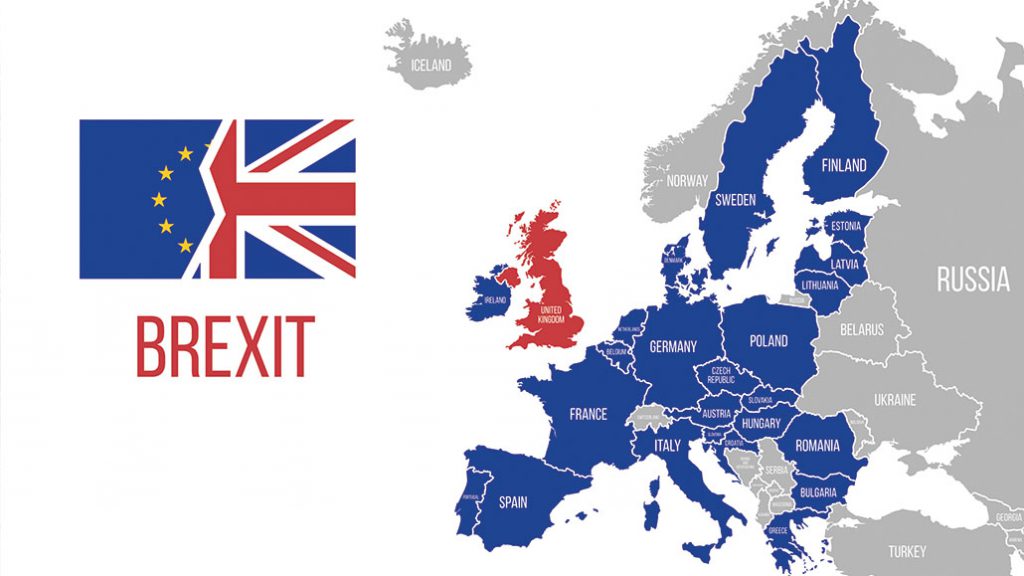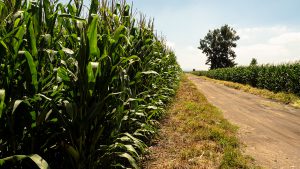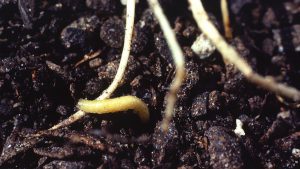An important relationship
TRADE WITH THE UNITED KINGDOM

EUROPE HAS TRADITIONALLY been a strong market for Ontario grain exports due to easy access to the St. Lawrence Seaway and Welland Canal and a relatively straight, short shipping route across the Atlantic. To take advantage of the location and freight advantage, free trade agreements are crucial.
The Canada-European Union Comprehensive Economic and Trade Agreement (CETA) came into force in 2017, which eliminated 94 per cent of agricultural tariffs immediately, while the rest are lowered over periods of three to seven years. Corn and soybeans are both tariff free under the agreement. When the United Kingdom (UK) exited the European Union in 2020, it meant a change in status quo, but also, potentially, opportunity.
UK INDEPENDENCE
The UK is made up of Great Britain and Northern Ireland and officially they left the European Union on January 21, 2020. However, both sides agreed to keep their relationship the same until December 31, 2020 to create a completely new trade deal. Now that it is no longer in the EU, the UK is free to set its own trade policy and can negotiate deals with other countries such as Canada. With the UK no longer as tightly connected to the EU, there may be additional export opportunities for Ontario grain. The European Union, meanwhile, is now the EU-27.
CANADA — UK TRADE DEAL
On April 1, 2021, the Canada-United Kingdom Trade Continuity Agreement (TCA) entered into force after both countries ratified it. The TCA ensures trade between the two countries is preserved under the same framework established under CETA and avoids any gaps in preferential trade access for each market. This agreement will carry forward CETA tariff elimination commitments and continues duty-free access for Ontario corn and soybeans. Canada and the UK will re-engage in the future to likely design a new bilateral free trade agreement.
ONTARIO EXPORTS TO THE UK
Ontario currently exports corn, soybeans, and soybean meal to the UK. Exporters shipped 36,000 metric tonnes (mt) of Ontario corn during 2020/21 market year to the UK, but as recently as 2018/19, 223,000 mt was shipped with a total annual value of corn ranging from $12 – $40 million dollars. While the European Union has been an important soybean market, and remains so, soybeans tended to go to countries other than the UK.
However, in 2020/21 the UK has taken 21,000 mt of soybeans so far, showing that there may be opportunities arising that previously did not exist. In calendar year 2020, Ontario shipped over $18 million in soybean meal to the UK. With the UK looking to increase trade with countries outside of the EU-27, there could be opportunities to increase market share of Ontario grains.
EU-27
The UK was often viewed as a relatively moderate in the European Union on areas such as glyphosate use and approving biotechnology. With the UK leaving, it may increase the power that environmental groups have within the EU Council and could diminish pro-market attitude in the EU-27. The UK has the fifth highest nominal GDP in the world and the second highest within Europe and leaving will create a large hole in the EU tax base.
However, even with the loss of the UK, the EU is the world’s second largest economy and Canada’s second largest trading partner after the United States. It will continue to have large economic clout and is the worlds second largest soybean importer after China. Maintaining a focus on this market remains a key focus for Ontario corn and soybeans exports.
ONTARIO EXPORTS TO THE EU-27
Ontario continues to ship corn and soybeans into Europe tariff free thanks to CETA. The EU-27 is Ontario’s number one market for exporting corn, with Ireland, Spain, and Portugal being the major destinations. Europe is also an important market for Ontario commodity soybeans, being the major destination over the last two crop years and nearly 70 per cent of all exported 2020 crop soybeans have gone to Europe. Italy, Germany, Spain, the Netherlands, and Belgium all have taken Ontario soybeans meaning that there will continue to be a focus on market development across Europe.
While the UK is no longer part of the European Union, they will continue to be influenced by their close neighbours. Working with both areas will be critical for ensuring Ontario grains continue to maintain and expand market access and sales.
Justin Shepherd is the market development coordinator for Grain Farmers of Ontario. •
EUROPEAN GREEN DEAL
Michael Buttenham
The European Green Deal provides a roadmap with actions to boost the efficient use of resources by moving to a clean, circular economy, restore biodiversity, and cut pollution. Within the Green Deal, the European Union will work towards climate neutrality in 2050. One of the main initiatives at the heart of the Green Deal is the Farm to Fork Strategy.
Farm to Fork Strategy
The stated goal of the Farm to Fork Strategy is to reduce the environmental and climate footprint of the food system, lead a global transition towards competitive sustainability from farm to fork, create a robust and resilient food system, and tap into new opportunities. The Commission will take additional action to drive more sustainable food consumption and production and includes a range of targets to be achieved by 2030 including:
- Reduce the overall use and risk of chemical pesticides by 50% and the use of more hazardous pesticides by 50% by 2030.
- 50% reduction of soil nutrient loss, aimed at reducing fertilizer use by at least 20%.
- 50% reduction in sales of antimicrobials for livestock and aquaculture.
- 25% of EU agricultural land under organic farming.
The EU’s position is that the Farm to Fork Strategy will promote a global move towards sustainable food systems and to lead the way in setting global environmental standards on food production.


























